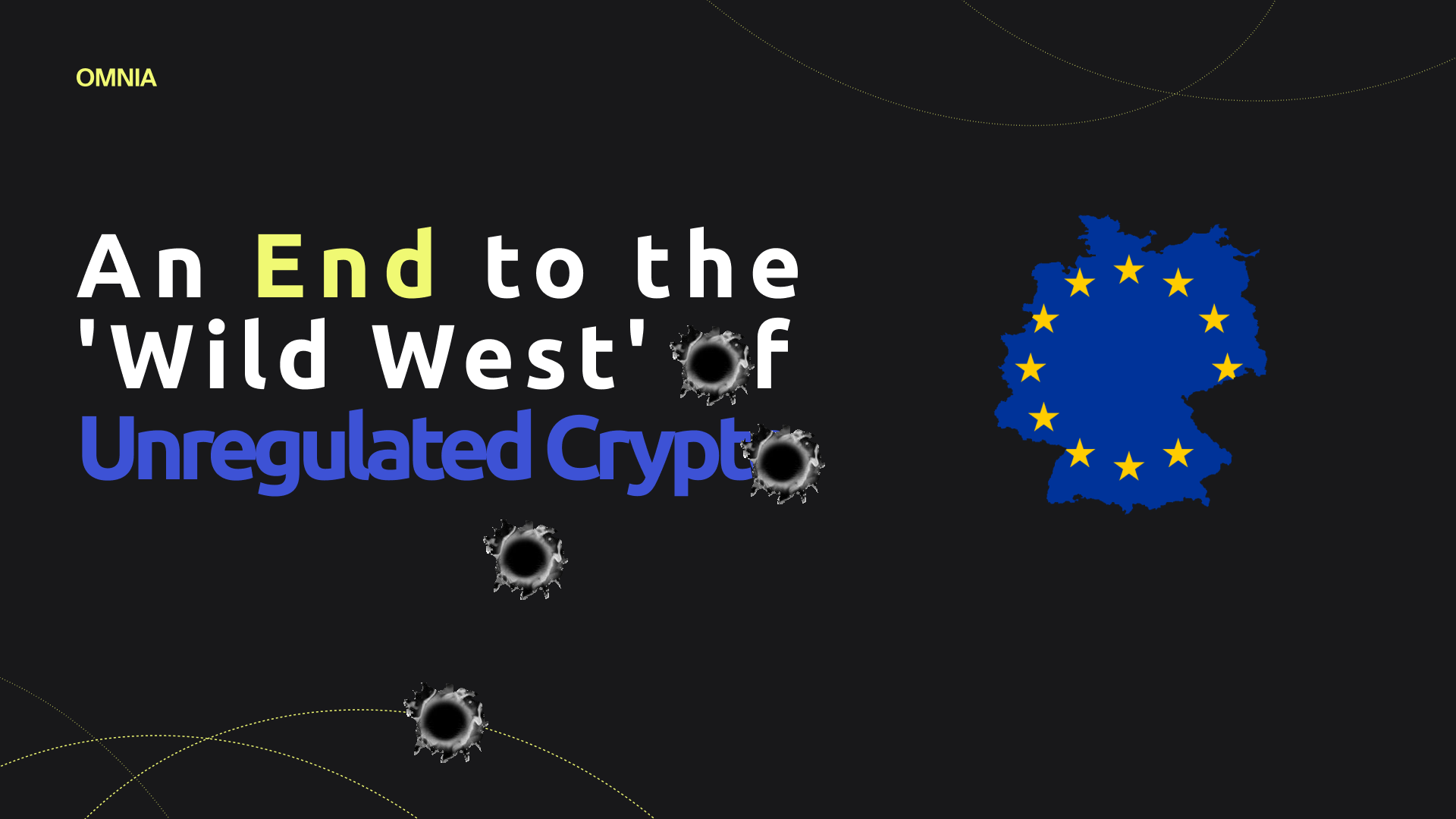
An End to the ‘Wild West’ of Unregulated Crypto
On June 30th, EU legislators from its Parliament, Commission, and Council reached a deal on the Markets in Crypto Assets bill (MiCA) and Transfer of Funds Regulation (TFR) bill. The two landmark bills marked the beginning of what many believe is the EU setting the pace for the rest of the world regarding crypto regulation.
In a June 29th Tweet, EU Member of Parliament and co-rapporteur for ECON Ernest Urtasun described the landmark agreements on the two bills as ‘putting an end to the wild west of unregulated crypto’ and ‘closing major loopholes in the European anti-money laundering rules.’
As pointed out in the first installment on the progress of crypto regulation in the EU, the final documents of both bills are yet to be publicly available. But, new information continues to trickle in on the fine details of both bills.
Mandatory Verification of the Beneficial Owner of Unhosted Wallets for Large Transfers above €1,000
The first notable development is that both the MiCA and TFR bills require the mandatory verification of the identity of the beneficial owner of an unhosted wallet receiving
large transactions above €1,000. The requirement only applies if the transaction originates from a Crypto Assets Service Provider (CASPs) such as a crypto exchange.
CASPs Will Have to be Sanction Compliant, Have Risk-Mitigation Measures, and Have Investor Protection Frameworks.
In addition, EU MP Ernest Urtasun explained that CASPs will be required to streamline their operations ‘to adopt internal policies, procedures, and controls to ensure compliance with targeted financial sanctions.’
Crypto Asset Service Providers will be required to implement new risk-mitigation measures. CASPs in the EU will also have to perform due diligence before establishing business relationships with other CASPs outside the EU.
CASPs will be under the watchful eye of the European Securities and Markets Authority (ESMA). The latter will have the power to prohibit or restrict services by CASPs in cases where it threatens existing investor protections, the general financial market integrity, or stability.
The same Crypto Asset Service Providers will be required to establish a presence in the EU with a resident director and office in the country they wish to operate.
The MiCA bill creates strong investor protections by requiring compulsory warnings for retail traders about the volatility risks associated with the trading of digital assets. For tokens without an identifiable issuer, such as Bitcoin, CASPs will be required to provide a project white paper and be held accountable for any misleading information about crypto assets and projects.
There will also be additional rules to prevent insider trading and market manipulation. This, in turn, means that MiCA might set the pace for regulations in the EU against MEV. The urgency for such was highlighted in a recent report by the Bank for International Settlements that compared MEV (Miner Extractable Value) to illegal activities in traditional finance such as front-running and sandwich attacks.
The OMNIA Protocol solves the NFT front-running issue by using private mempools with private endpoints between users and miners. The private mempools block bots and malicious individuals from accessing transactional information that is usually publicly available and using it to front-run trades on DEXs and when trading NFTs.
Additionally, OMNIA has collaborated with Flashbots, a research and development organization working on mitigating the native externalities of MEV. Adopting a neutral, public, open-source infrastructure for MEV extraction could change the game as it currently is, making frontrunning a thing of the past and effectively improving the efficiency of every transaction.
CASPs to Have Robust Safeguards for Data Protection.
Concerning the security of personal data, the Crypto Service Assets Providers will be required to have robust safeguards for data protection that adhere to current General Data Protection Requirements (GDPR). User information will only be available to CASPs carrying out transactions and major authorities.
Crypto ATMs Not Exempt from the MiCA and TFR Bills.
One significant fact about the Markets in Crypto Assets bill (MiCA) and Transfer of Funds Regulation (TFR) bill is that the rules capture Crypto ATMs set up in the European Union.
MiCA’s Plans to Tame Stablecoin Issuance and Prevent Another UST Collapse.
Regarding stablecoins, EU MP Ernest Urtasun updated via Twitter that the MiCA bill is designed to ‘provide security for investors and support sustainability.’ This includes providing safeguards against crypto-crashes such as the one that was witnessed in May with the collapse of the TerraUSD (UST) stablecoin.
Consequently, large stablecoin issuers will have to align to strict operational rules if they are used widely in the EU as a payment method. Stablecoins will have a daily transactional cap of €200 million once the bill is implemented.
Stablecoin reserves will have to be maintained ‘to cover all claims and provide redemption rights of the holders.’ The reserves will also have to be ‘legally and operationally segregated’ and further removed from the holder’s interests. Reserves will also have to be fully protected in the event of insolvency.
MiCA and TFR Bills Would Not Have Completely Prevented Recent Crypto Crashes and Insolvent Projects.
However, in a recent Twitter analysis, Patrick Hansen, a Crypto Venture Advisor at Presight Capital, pointed out that the recently passed EU regulation might have had a limited effect in preventing recent crypto events surrounding the collapse of UST, the Anchor Protocol, Celsius Network’s insolvency and the liquidation of the Three Arrows Capital hedge fund.
According to his analysis, the two bills might not have prevented 90% of EU residents from being affected by the events. But they would have probably restricted UST from being offered in the EU and forced LUNA to disclose more information on exchanges. The EU regulation could have also barred the Celsius Network team from advertising their products directly to EU consumers.
There Will Probably be a MiCA 2.0.
As mentioned in our first update on the MiCA and TFR bills passed in the EU, there are still more areas in the crypto and blockchain industry that remain uncovered from the scope of both bills. They include the entire DeFi industry (lending, staking, and assets with anonymous issuers) and NFTs.
As a result, there will likely be a second iteration of the MiCA bill to cover these elements. In a speech last month, EC President Christine Lagarde hinted at the possibility of MiCA 2 after highlighting the need to regulate DeFi before its link to traditional finance grew to levels that would affect the region’s financial stability.

